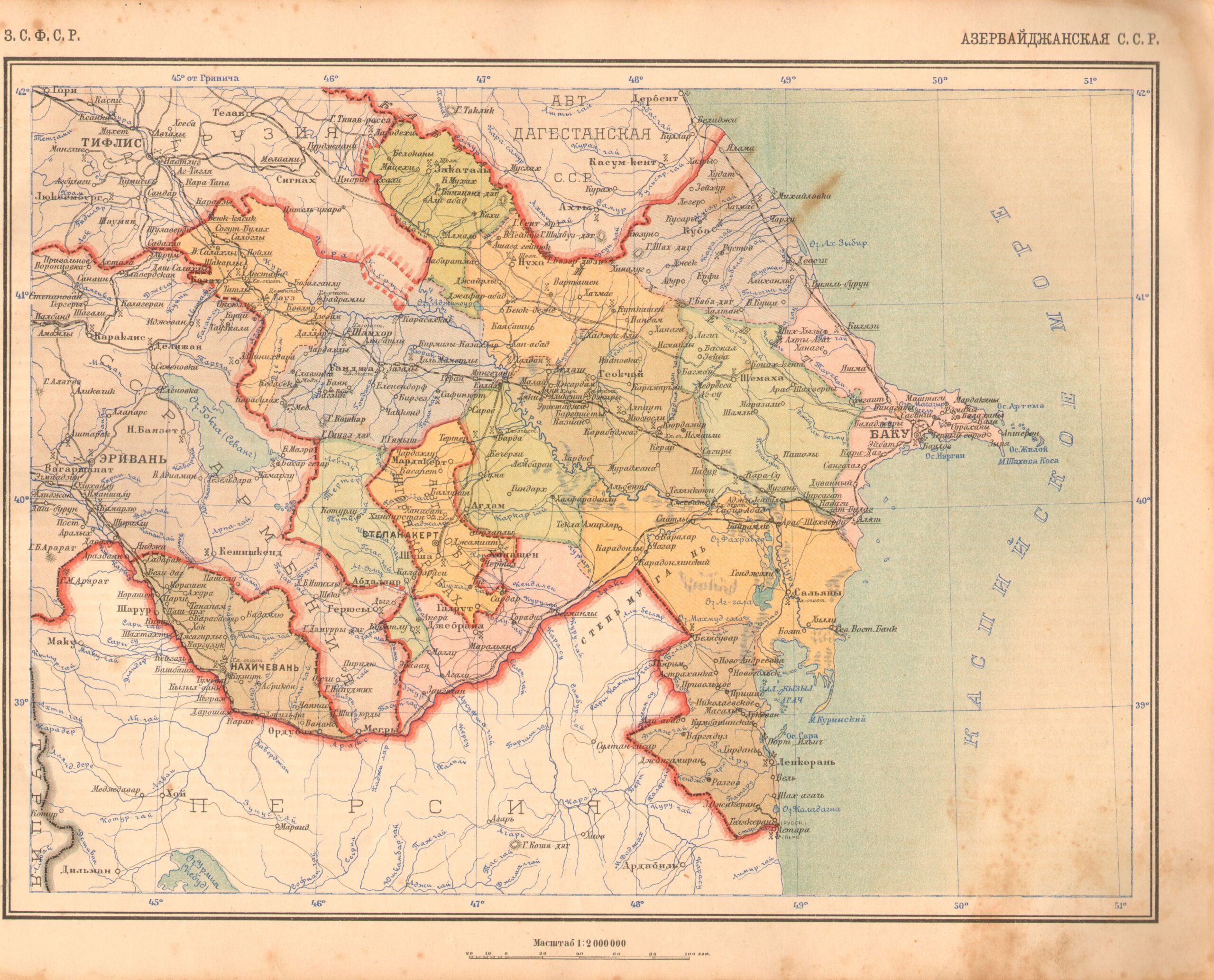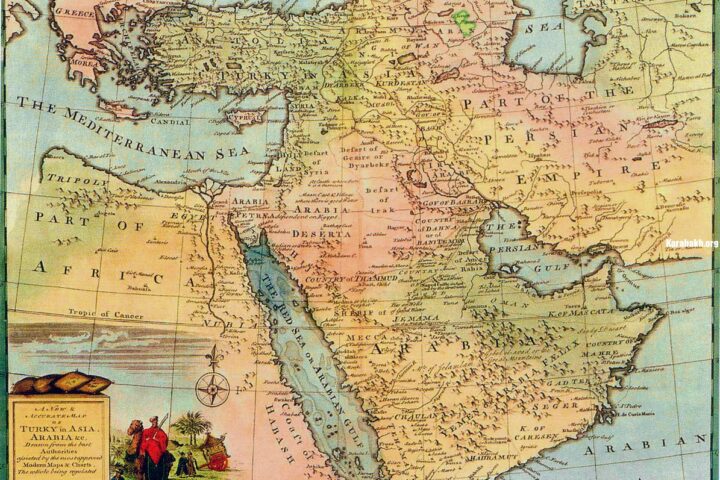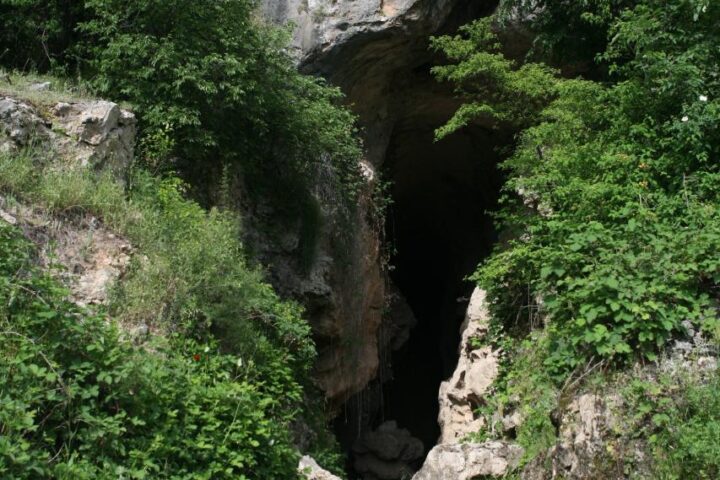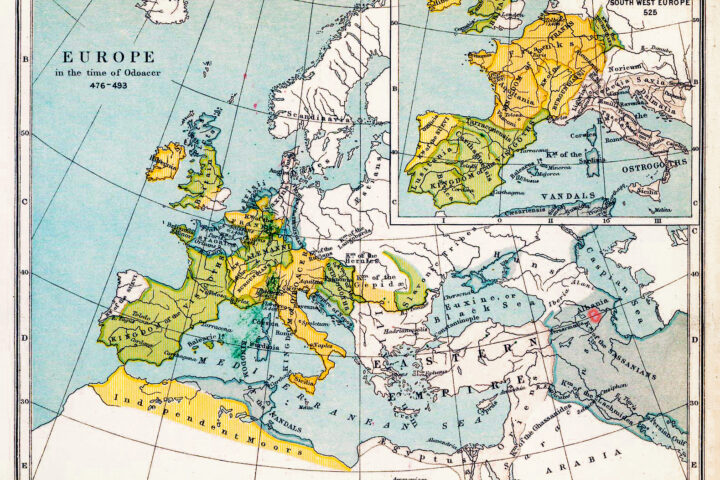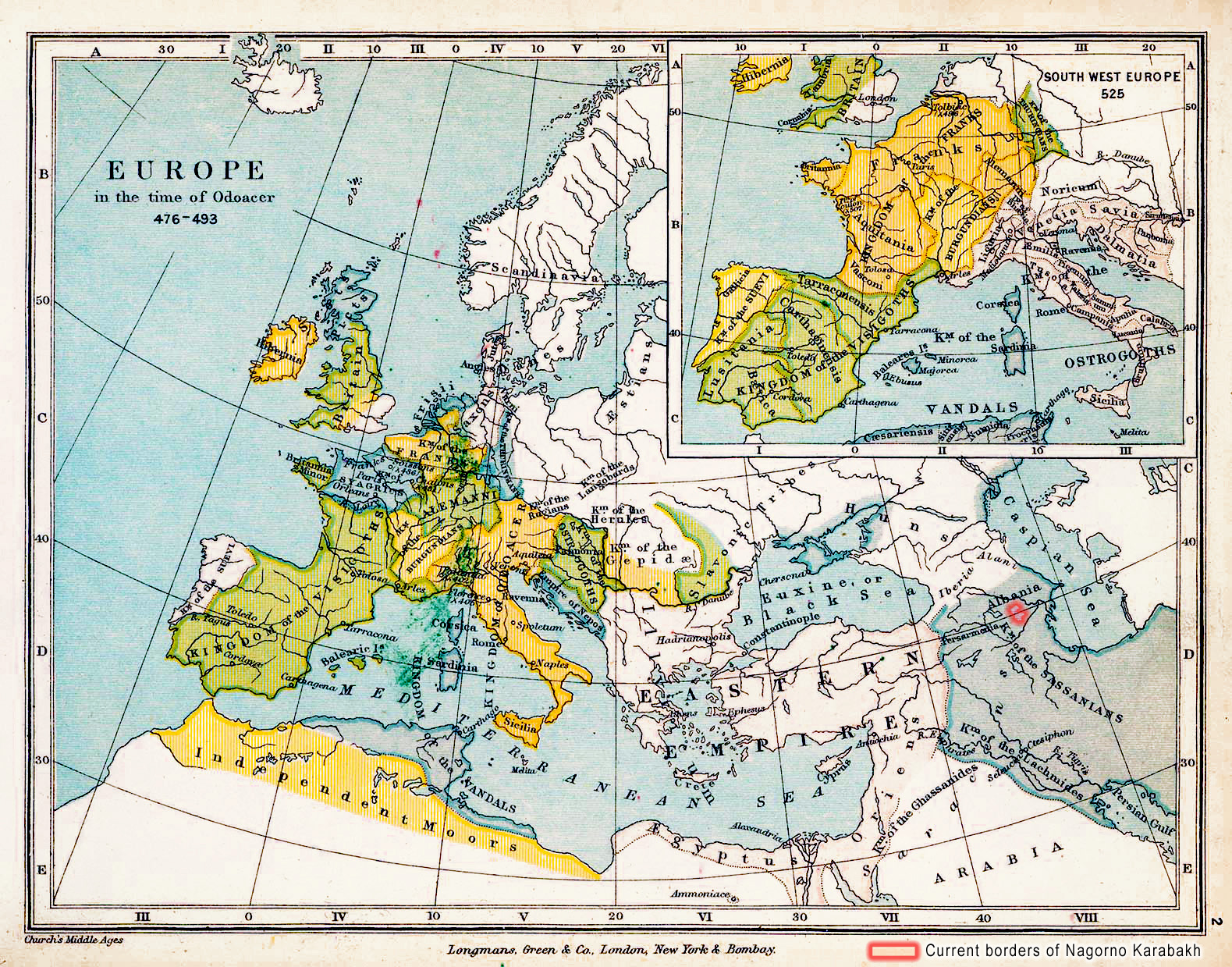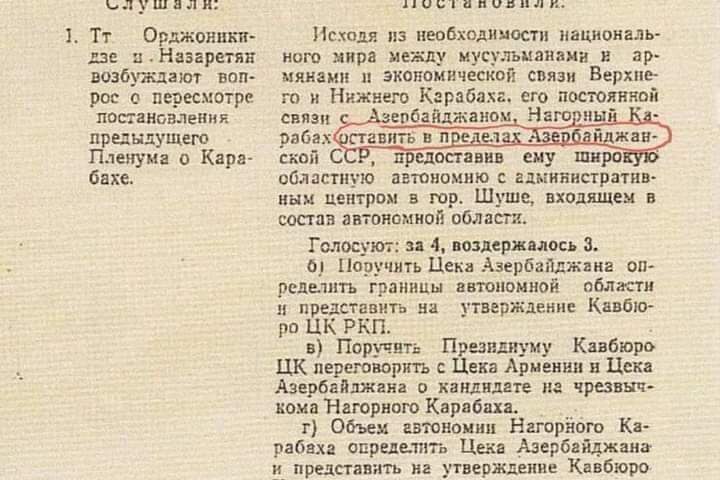After sovetization of Azerbaijan, Armenia, which remained independent for some time, didn’t stop its attempts to annex Karabakh and other western regions of Azerbaijan. The XI Red Army was engaged more in disarmament of Azeris and reprisals over the protesters against the Bolshevik violence, rather than in protecting the civilian population from dashnaks. In summer 1920, the dashnak troops having benefited from the extremely difficult political situation that arose in Azerbaijan as a result of anti-Bolshevik riots in a number of regions, including Karabakh, attacked Zangezur, Karabakh, Nakhichevan and southern parts of the Kazakh district again. Self-defence forces with support of the XI Red Army expelled them only by the end of 1920. However, the most part of Zangezur remained under occupation. The head of the Azerbaijan SSR (chairman of the Sovnarkom) N. Narimanov informed in his telegram to Moscow in June 1920: «…As to the allegedly contested Zangezur and Karabakh, which are already part of the Soviet Azerbaijan, we categorically state, that these territories are indisputable and must remain within Azerbaijan in the future»[1]. Another telegram sent by Orjonikidze, the chairman of the Kavburo (the Caucasus section) of the Russian Communist Party (RCP(b)) and addressed to Lenin and to the minister (narkom) of foreign affairs of the Soviet Russia Chicherin informed: «the Soviet authority is declared in Karabakh and Zangezur and both mentioned territories consider themselves a part of the Azerbaijan Soviet Republic»[2].

With sovetization of Armenia on November 30, 1920 the hostilities between the parties ended but the territorial claims of Armenia to Azerbaijan gained further momentum. The December 1, 1920 declaration of the head of the Azerbaijanian Soviet leader Narimanov proclaimed that «from now on no territorial disputes can be a reason for bloodshed of two centuries-long neighboring peoples: Armenians and Muslims»[3] [i.e. Azeris]. According to the same declaration, «as a jest of revolutionary solidarity» under pressure from Moscow, Zangezur was transferred to Armenia. Azerbaijan lost more than 10 thousand km2 of its territory and direct link with Nakhichevan, while Armenia increased its own territory as much as twice.
Armenia laid claims also to Nakhichevan, which was occupied by the Turkish troops at that time. However, according to the Moscow Treaty signed in 1921, Turkey withdrew its troops from Nakhichevan only with condition that Nakhichevan remained a part of Azerbaijan. But Armenian territorial clams didn’t ended yet.
The communist leadership of Armenia demanded transfer of the mountainous part of Karabakh to Armenia and conducting a territorial demarcation based, exceptionally, on the national division. On June 27, 1921 the joint session of the Politbureau and Orgbureau of the Central Committee of the Azerbaijan Communist Party (CC AzCP) having considered these demands made a decision stating that «the suggestion to separate the territories with Armenian and Turk [i.e. Azeri] population, respectively, to Armenia and Azerbaijan from the view of the administrative and economic expediency…to consider unacceptable» and decreed: {[The only solution to the issue can be broad involvement of the Armenian and the Muslim masses to the process of the Soviet reconstruction»[4]. The final solution of this issue was to be discussed in the plenum of the Kavburo.
On July 4, 1921 the session of the Kavburo began discussing the «Karabakh issue». In the session participated the members of the Kavburo Orjonikidze, Makharadze, Narimanov, Kirov, Myasnikov, Nazaretyan, Figatner and the member of the Central Committee of the RuCP, the commissar on the nationalities Stalin. The eighth member of the Kavburo Orakhelashvili was absent. Kavburo had to decide whether to leave Karabakh within Azerbaijan or whether to transfer it to Armenia. Narimanov, Makharadze and Nazaretyan voted in favor of Karabakh remaining a part of Azerbaijan; Orjonikidze, Myasnikov, Kirov and Figatner voted against this decision. Nazaretyan also joined the last four, when voting for conducting a plebiscite only among Armenians. According to this voting the Kavburo adopted a decision «On inclusion of the Mountainous Karabakh to the Armenian SSR». Thus, the Mountainous Karabakh was transferred to Armenia and considered its territory for almost 24 hours. But discussion didn’t end here. This Kavburo decision triggered the head of the Azerbaijan SSR Narimanov’s decisive protest. Having pointed out that this decision is fraught with political instability in the region, he proved it to be unjustified and demanded the transfer of the discussion to the Central Committee of the RuCP- the highest instance of the Soviet government.
Narimanov’s position played a crucial role in further events. On July 5 the session returned to the discussion of the «Karabakh issue». The new session made decision: «Proceeding from the necessity of national peace between the Muslims and Armenians, and economic links of the upland and lowland Karabakh, its constant link with Azerbaijan, to leave the Mountainous Karabakh within the Azerbaijan SSR, having granted it a broad regional autonomy with the administrative center in the town of Shusha included in the autonomous region»[5]. Definition of the concrete questions and forms of the autonomy was entrusted to the CC AzCP, stipulated with its consequent approval in the Kavburo.
Today the Armenian historians write a lot that, ostensibly, the Kavburo decided to «annex» Karabakh to Azerbaijan «under pressure from Stalin». This is a substantial mistake, since the question was not about annexing Karabakh to Azerbaijan at all. The question was posed as following: to leave Karabakh within Azerbaijan or to transfer it to Armenia, and, as seen from the Kavburo’s decision, it voted to «leave» (and not to «annex») Karabakh within Azerbaijan.
As to the Kavburo’s first decision on July 4, it should be noted that it gave no argument in favor of Karabakh’s transfer to Armenia. Most probably, the Kavburo members voting in favor of Karabakh’s transfer to Armenia were guided by two arguments: firstly, Armenians constituted the majority in Karabakh’s mountainous part, and secondly, after war with Turkey in September 1920 the territory of Armenia considerably decreased and was not more than 10 thousand km2. Some people even noted, that by the size of its territory and population Armenia was too small to fit under the notion of not only a state, but even of a union republic. Thus some soviet leaders thought about expanding the territory of Armenia on the expense of the Azeri lands of Zangezur, eastern bank of the Gekcha lake (present-day Sevan), Karabakh and Nakhichevan. And as history showed, Armenians considerably succeeded in achieving these goals.
And finally, as to Stalin and his alleged role in the Kavburo, it’s not a secret that he had sympathized neither Azerbaijan, nor its leader Narimanov. Simply, he, as well as other members of the Kavburo, didn’t want prolongation of the discussion and aggravation of the situation over Karabakh. Transfer of the discussion of the Karabakh problem to Moscow to the Central Committee wouldn’t have satisfied many members of the Kavburo, as well as Stalin, who, at that time, had been continuously criticized for his erroneous positions regarding the national problems. All of these, as well as Narimanov’s resolute position, predetermined the further discussion of the Karabakh issue.
- Azerbaijan Central State Archive, reserves 410, inventory 2, folder (delo) 69, lists 181-187 / also: I Aliyev «Nagorno Karabakh» op cit. [20] p. 80;
- Archive of the MFA of USSR, folder (delo) 54882, list 20 / also: Id. p. 81;
- The «Communist» newspaper (in Azerbaijan) No 178, December 2, 1920;
- [Azerbaijan Communist] Party Archive [PAAF IML] reserve 1, inventory 74, folder 123, list 64 / also: J. B. Kouliyev «Regarding the history of the establishment of the MKAR» (Is istorii obrazovaniya NKAO- in Russian) Information bulletin of the Azerbaijan SSR Academy of Sciences (series of history, philosophy and law) No 3, p. 12, 1973;
- Id. reserves 1, inventory 125, folder 107, list 107 / Id. p. 12;
